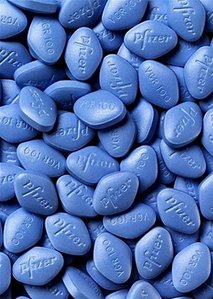
Arena weight-loss data expected to underwhelm
Upcoming trial results for lorcaserin, the experimental obesity drug being developed by Arena Pharmaceuticals Inc, will likely show it is about 4 percentage points more effective in promoting weight loss than a dummy pill
But that is well short of the 9.4 percent placebo-adjusted weight loss reported last week by Vivus Inc, which is developing Qnexa — a combination of phentermine and epilepsy treatment topiramate, both now sold as generics, that is designed to minimize side effects from the two drugs.
But Wall Street is not discounting the value of a viable treatment for obesity, a health-damaging condition afflicting more than one-quarter of all Americans. “Right now physicians have pretty much nothing,” said JMP Securities analyst Jason Butler.
Piper Jaffray has forecast lorcaserin sales of $3 billion in 2015.
One-year results from Vivus’ Qnexa trials sent the company’s stock up more than 70 percent on Wednesday.
“There is a lot less opportunity for that to happen with this (Arena) trial,” Butler said. “We’ve seen so much data already.”
Shares of Arena, which ended Nasdaq trading at $5.30 on Friday, closed as low as $2.26 in April and as high as $7.42 in February.
The phentermine used in Vivus’ Qnexa is a stimulant that was part of the fen-phen diet drug cocktail. Other drugs used in the cocktail, flenfluramine and dexfenfluramine, were recalled in 1997 after they were linked to heart valve damage.
SIDESTEPS HEART PROBLEMS
Lorcaserin is a serotonin activator like fenfluramine, but it is designed to selectively target only one variety of the chemical — and thereby sidestep heart-related side effects.
Earlier studies have found no heart problems associated with the drug. “There is no reason to expect anything different safety-wise,” from the new trial results expected this month, said Carol Werther, an analyst at Summer Street Research.
The company earlier this year said a large, year-long trial found that lorcaserin patients, on average, lost 5.8 percent of their body weight, while placebo patients lost 2.2 percent of their weight — a percentage point difference of 3.6 percent.
“No single agent has consistently shown a 5 percentage point difference,” said Werther.
U.S. Food and Drug Administration guidelines for obesity drugs require a 5 percent improvement in weight loss between the test drug and placebo or that the number of subjects who lose at least 5 percent of their body weight be at least 35 percent, and double the proportion in the placebo group, with a statistically significant difference between the groups.
The earlier lorcaserin trial found that 48 percent of patients on the drug lost 5 percent or more of their weight, while 20.3 percent of placebo patients achieved that goal
Dominic Behan, chief scientific officer and co-founder of Arena, said a major advantage of lorcaserin is that it is a single agent, and that doctors do not need to adjust doses for patients.
Moreover, he said lorcaserin improved cholesterol levels in patients. And data from earlier trials suggest it can be safely taken on a chronic basis, Behan said. By contrast, he said phentermine is currently approved only for short-term use.
Arena weight loss, Arena weight loss Health, Arena weight loss Health Latest, Arena weight loss Health Information, Arena weight loss Health information, Arena weight lossHealth Photo,Exercising for Weight Health photo, Arena weight loss Health Latest, Arena weight lossHealth latest, Exercising for Weight Health Story, Healthy Minnesota Health story, Arena weight loss Video, Arena weight loss video, Arena weight loss Health History, Arena weight loss Health history, Arena weight lossover Picture, history, Arena weight loss Asia, Healthy Minnesota asia, Arena weight loss Gallery, Exercising for Weight gallery, Arena weight loss Photo Gallery, Healthy Minnesota photo gallery, Arena weight loss Picture, Arena weight loss picture, Arena weight loss Web, Malaysia Health, web Health, web Health picture, video photo, video surgery, gallery, laparoscopy, virus, flu, drug, video, Health Health, calories, photo, nutrition, health video, symptoms, cancer, medical, beating, diet, physical, Training, organic, gym, blister, exercise, weightloss, surgery, spiritual, eating, tips, skin, operation, bf1, Arena, weight,loss, data, expected, to, underwhelm




